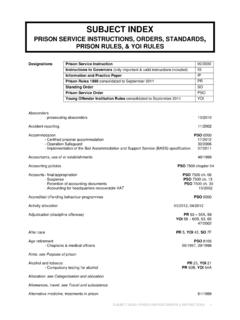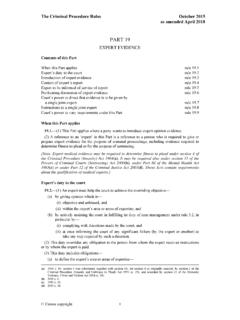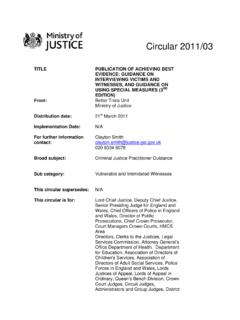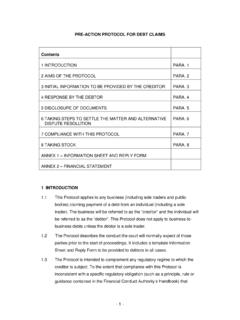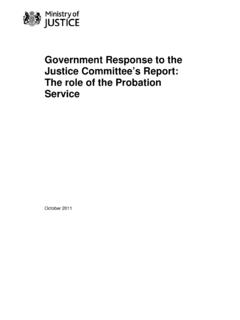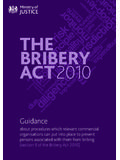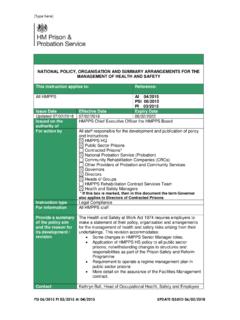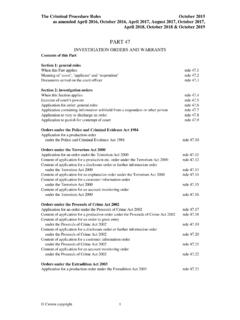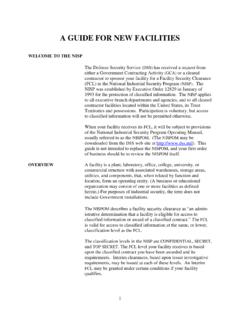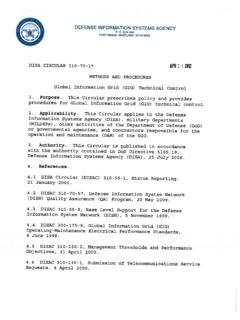Transcription of Criminal Practice Directions XIII Listing - Justice.gov.uk
1 Criminal Practice Directions DIVISION xiii Listing Contenivision ts of this D CPD CPD xiii Listing xiii Listing A B Judicial responsibility and key principles Classification rown Court to the CPD xiii Listing C Referral of cases in the CResident Judge and to the Presiding Judges CPD CPD xiii Listing xiii Listing D E Authorisation of Judges Allocation of business within the Crown Court and transfer CPD xiii Listing F Listing of trials, Custody Time Limitsof cases Listing of hearings other than trials ent of CPD xiii Listing GCPD xiii Listing Annex 1: General principles for the deploymthe judiciary in the magistrates court Annex 2: Sexual offences in the youth court Annex 3: Cases involving very large fines in he magistrates courts CPD xiii Listing CPD xiii Listing tAnnex 4: Case management of terrorism cases CPD CPD xiii Listing xiii Listing Annex 5: Management of cases from the Organised Crime Division of the Crown Prosecution Service CPD xiii Listing AND ALLOCATION These Practice Directions on Listing and Allocation replace sections , , , IV.
2 33, and and Annex F of the Consolidated Criminal Practice Direction of 8 July 2002 ([2002] 1 2870; [2002] 2 Cr. App. R. 35), as amended, which are hereby revoked. Additionally, they consolidate Deployment and Allocation in Criminal Cases in Class 1, 2 and 3: Guidance for all Resident Judges issued by the Senior Presiding Judge on 26th May 2005, incorporate parts of the guidance issued by the Senior Presiding Judge and by HMCTS on Custody Time Limits in May 2012 and replace the guidance on Transfer of Cases to other Crown Courts for sentence issued by the Senior Presiding Judge in March 2009.
3 Reference is made to recommendations from the Magistrates Courts Disclosure Review May 2014. Annex 1 incorporates the relevant operational parts of the Protocol to support judicial deployment in the Magistrates Courts issued in November 2012. Annex 2 subsumes the Sexual Offences Protocol in the Youth Court issued by the Senor Presiding Judge in March 2010. CPD xiii Listing A: JUDICIAL RESPONSIBILITY FOR Listing AND KEY PRINCIPLES Listing as a judicial responsibility and function Listing is a judicial responsibility and function. The purpose is to ensure that all cases are brought to a hearing or trial in accordance with the interests of justice, that the resources available for Criminal justice are deployed as effectively as possible, and that cases are heard by an appropriate judge or bench with the minimum of delay.
4 The agreement reached between the Lord Chief Justice and the Secretary of State for Constitutional Affairs and Lord Chancellor set out in a statement to the 1 House of Lords on 26 january 2004 ( the Concordat ), states that judges, working with HMCTS, are responsible for deciding on the assignment of cases to particular courts and the Listing of those cases before particular judges. Therefore: (a) The Presiding Judges of each circuit have the overall responsibility for Listing at all courts, Crown and magistrates , on their circuit; (b) Subject to the supervision of the Presiding Judges, the Resident Judge at each Crown Court has the general responsibility within his or her court centre for the allocation of Criminal judicial work, to ensure the just and efficient despatch of the business of the court or group of courts.
5 This includes overseeing the deployment of allocated judges at the court or group, including the distribution of work between all the judges allocated to that court. A Resident Judge must appoint a deputy or deputies to exercise his or her functions when he or she is absent from his or her court centre. See also paragraph : Discharge of judicial responsibilities; (c) The Listing officer in the Crown Court is responsible for carrying out the day to day operation of Listing Practice under the direction of the Resident Judge. The Listing officer at each Crown Court centre has one of the most important functions at that Crown Court and makes a vital contribution to the efficient running of that Crown Court and to the efficient operation of the administration of Criminal justice; (d) In the magistrates courts, the Judicial Business Group, subject to the supervision of the Presiding Judges of the circuit, is responsible for determining the Listing Practice in that area.
6 The day to day operation of that Listing Practice is the responsibility of the justices clerk with the assistance of the Listing officer. Keyinciples of Listing When setting the Listing Practice , the Resident Judge or the Judicial Business Group prshould take into account principles a j: (a) Ensure the timely trial of cases and resolution of other issues (such as confiscation) so that justice is not delayed. The following factors are r lev t2dee an : i. In general, each case should be tried within as short a time of its arrival in the court as is consistent with the interests of justice, the needs of victims and witnesses, and with the proper and timely preparation by the prosecution and fence of their cases in accordance with the Directions and timetable set; ii.
7 Priority should be accorded to the trial of young defendants, and cases where there are vulnerable or young witnesses. In R v Barker [2010] EWCA Crim 4, the Lord Chief Justice highlighted the importance to the trial and investigative process of keeping any delay in a case involving a child complainant to an irreducible minimum ; iii. Custody time limits (CTLs) should be observed, see CPD xiii Listing F; iv. Every effort must be made to avoid delay in cases in which nthe defenda t is on bail; (b) Ensure that in the magistrates court unless impracticable, non custody anticipated guilty plea cases are listed 14 days after charge, and non custody anticipated not guilty pleas are listed 28 days after charge; (c) Provide, when possible, for certainty and/or as much advance notice as possible, of the trial date; and take all reasonable steps to ensure that the trial date remains fixed.
8 (d) Ensure that a judge or bench with any necessary authorisation and of appropriate experience is available to try each case and, wherever desirable and practicable, there is judicial continuity, including in relation to post trial hearings; (e) Strike anap ps baccount of: p roriate balance in the ue of resources, y taking i. The efficient deployment of the judiciary in the Crown Court and the magistrates courts taking into account relevant sitting requirements for magistrates. See CPD xiii Annex 1 for information to support judicial deployment in the magistrates courts; ii.
9 The proper use of the courtrooms available at the court; iii. The prov ision in long and/or complex cases for adequate reading time for the judiciary; iv. The facilities in the available courtrooms, including the security needs (such as a secure dock), size and equipment, such as video and live link facilities; p t ev. Th e roper use of those who attend h Crown Court as jurors; vi. The availability of legal advisers in the magistrates courts; vii. The need to return those sentenced to custody as soon as possible after the sentence is passed, and to facilitate the on of the prison escort contract; efficient operati (f) Provide w eh re practicable: i.
10 The defendant and the prosecution with the advocate of their choice where this does not result in any delay to the trial of the case; and, ii. for the efficient deployment of advocates, lawyers and associate prosecutors of the Crown Prosecution Service, and other prosecuting authorities, and of the resources available to the independent legal profession, for example by trying to group certain cases together; 3 (g) Meet the need for special security measures for category A and other high risk defendants; (h) Ensure that proper time (including judicial reading time) is afforded to hearings in which the court is exercising powers that impact on the rights of individuals, such as applications for investigative orders or warrants; (i) Consider the significance of ancillary proceedings, such as confiscation hearings, and the need to deal with such hearings promptly and, where possible, for such hearings to be conducted by the trial judge; (j) Provide for government initiatives or projects approved by the Lord Chief Justice.
